I would agree the math looks good. We run a similar spreadsheet calc to determine area and weight based on flute dimensions and barrel dimensions. Fluting adds low percentages of surface area, as we are replacing an existing surface with another one of a shorter radius. While we do not flute barrels we wanted to understand the "areas" involved as compared to our barrels. Our barrels add north of 400% more surface area- which absolutely becomes a measurable. Especially at the chamber as the everything in front of the barrel is a radiator. We also find the bending moment of the barrel due to fluting decreases- the barrel will flex more. If one were to make extremely deep straight wall flutes some gain could be had but under limited directions. It the end the minor diameter effect strength. A threaded bolt fails at the root not the tip of the thread. Outside of looks and ounces - which to some both are very important- little gain if not negative effect takes place. I believe Accuracy International (one of the big names- been a few years) did a real world study on fluted barrels and their effect on POI shift as the barrel heats- they went to a round barrel away from their current flutes.Let's walk before we try to run. Frankly, I'm not looking forward to modeling spiral flutes. Doing it isn't difficult, it's making it still work after various changes to the barrel shape.
Adjusted the barrel dims to a Shilen #5:
Unfluted barrel "weighs" 3.50 lbs and has a Surface Area of 77.2502 square inches.
Fluted barrel "Weighs" 3.16 lbs and has a Surface Area of 82.4180 square inches.
Assuming that I did the math correctly that is a 9.7% reduction in mass and a 6.7% gain in Surface Area.


Length of the fluting was adjusted to what looked more appropriate.
This seat of SW doesn't have the simple analysis tool installed, so having a look at the change in bending strength is going to have to wait until a solution presents itself. Intuitively I expect spiral fluting to be more flexible than straight fluting. I'm hoping to prove that right or wrong, so I'll keep looking for a solution to that.
-
If you are being asked to change your password, and unsure how to do it, follow these instructions. Click here
You are using an out of date browser. It may not display this or other websites correctly.
You should upgrade or use an alternative browser.
You should upgrade or use an alternative browser.
Barrel Fluting simulation using SolidWorks
- Thread starter ntsqd
- Start date
 Help Support Long Range Hunting Forum
Help Support Long Range Hunting Forum
Bob Wright
Well-Known Member
Keep us updated. Interesting research.
Bob Wright
Well-Known Member
One more thing came to mind was that shock wave traveling up and down the barrel in m/seconds from the primer explosion, then pressure and heat following. Maybe that's another study but thought I would toss it out there.
The far extreme of fluting. More than 50% stiffer by weight, 400%+ more cooling surface, low SD migration. A .416 Barret built by Dan Warner for Chris Schmidt -"the most accurate rifle I have ever owned". A four round group, including cold bore at 100yds. The current record cold bore challenge at 2874yds. The same 2874 target was also part of the course for that leg and Chris hit it 6-8. After a 15rd string within 9min typically the barrel can be picked up by hand. At that point it will raise in temp for about 3mins than start cooling towards ambient. You can rapid cool with brake clean/acetone down the ports. However, I am the first to admit not every guy pulling a trigger on a big cal rifle can produce groups like that. The tech is worthless without the skills to use it.
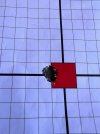







A man after my heart: we are specifically addressing the shock wave and pressure wave events and how to reduce/negate them. One of the trademark attributes of our barrels is the recoil event: it is not the same as a standard barrel. Quieter barrel= less felt recoil beyond a single vector= stay on target. I consistently watch my 200yd impacts with our 300Normas. Our gas guns are known for their "smoothness"= ability to stay on target. Further pursuing Swaves and Pwaves and secondary impulses will further reduce recoil carnage.One more thing came to mind was that shock wave traveling up and down the barrel in m/seconds from the primer explosion, then pressure and heat following. Maybe that's another study but thought I would toss it out there.
Bob Wright
Well-Known Member
I had no idea this was being researched. It would be interesting just to see where your research is going and start a new thread. And some more pics of what you are building and testing. Those pictures are insane! Congrats on your work.A man after my heart: we are specifically addressing the shock wave and pressure wave events and how to reduce/negate them. One of the trademark attributes of our barrels is the recoil event: it is not the same as a standard barrel. Quieter barrel= less felt recoil beyond a single vector= stay on target. I consistently watch my 200yd impacts with our 300Normas. Our gas guns are known for their "smoothness"= ability to stay on target. Further pursuing Swaves and Pwaves and secondary impulses will further reduce recoil carnage.
Single monolithic. The main pattern is drilled to calculated depths based on caliber. Multiple patterns are used to inhibit frequency response. The barrel is built to move air thru its core with every shot. Moving air at velocities approaching 25m/sec along with large surface area absolutely will have a measurable response for cooling and barrel stability.

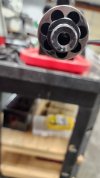


ntsqd
Well-Known Member
What drives that speed of air movement?
With it looking like the flutes are flat against the barrel and round on the outer edge, is there something attached on the end of the barrel?

A column of air sits in front of the bullet. It is then accelerated to "blank" speed". As it is passing from the muzzle/brake a extreme low pressure occurs just in front of the exit. That exiting column acts as a venturi on the deep bores around the rifled bore. We have actually collected 8 little piles of impacted debris behind the brake. We instruct the gunsmith to allow a section to remain to create this effect. A well designed brake further enhances this event (Heber) drawing on critical angle venturi effects.What drives that speed of air movement?
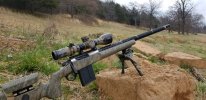
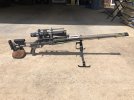
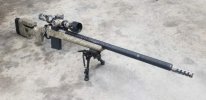


The target is shots 4,5,6 from the 300WM- 200yds.
As a note: we are not competing with light weight barrels, CF nor can we. They do what they are designed to do. We are after the C8 Corvette- something that does a bunch really well.
 With extremely user friendly manners. (5shots 7mm ladder work up.
With extremely user friendly manners. (5shots 7mm ladder work up.We would like to start a specific thread on barrel science. Limited responses to criteria. Reaching outside the shooting world to experts in their field like metallurgy, heat treat, Cryo.... And to determine if harmonics actually has an effect on accuracy... we were told it does not by a pretty big player. Start with a survey.I had no idea this was being researched. It would be interesting just to see where your research is going and start a new thread. And some more pics of what you are building and testing. Those pictures are insane! Congrats on your work.
ntsqd
Well-Known Member
As threads will do, this one has wandered away from my intent of doing and showing some simple analysis of how traditional fluting affects barrel weight and surface area, and hopefully stiffness. Not that the more involved and sometimes nearly esoteric points brought up aren't important, but they do tend to muddy the water. There's some theory and conjecture tossed around as fact surrounding flutes that I had hoped to confirm or reject within the scope of my experiment, but I think that we're past that point with this thread.
What I've learned is to have it all "in the can" so to speak before starting the thread rather than doing it as we go along.
What I've learned is to have it all "in the can" so to speak before starting the thread rather than doing it as we go along.